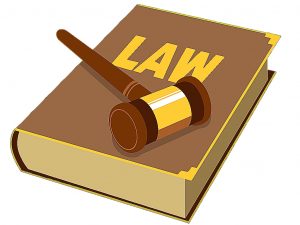How to Write Law Articles: Writing law article is a very demanding undertaking. Law is not a general field; therefore there are some peculiarities ascribable to it. A writer who seeks to write law article must be well grounded in law, particularly on the topic or area intended to be written on. Just like every other article, a law article must have purpose and direction. It must as well have a target audience. These two preliminaries are the crossways to a good law article.

Recommended: How to answer Law questions excellently.
How to Write a Legal/Law Article (Structure and Format to Follow)
The Preliminaries: A writer is usually motivated to write on a particular topic by a reason or reasons. These reasons constitute the purpose and direction of the article. This raises the question as to what exactly the writer intends to achieve by the writing. The writer may have been motivated to develop an appraisal on a particular topic, and this is usually the case, because an appraisal permits the writer to assess the totality an applicability of the intended principles and then develop their personal opinion on them, after which the writer recommends solutions or alternatives if any.

All these are firstly considered in the preliminary stage. Another important consideration in the preliminary stage is the audience. Every piece of writing has a targeted audience. It is the category of audience borne in mind by the writer that inspires the language of the article and sometimes the purpose and direction too.
Also see: How to become a successful lawyer
Abstract: An abstract is an abridgement or summary of a longer publication. A proper law article must have an abstract. The abstract should come immediately after the title. It is under the abstract that the writer gives a brief overview of the content and purpose of the article. The abstract must bear the readers in mind in such a way that after perusing through the abstract, the reader should have a clue of the article’s purpose and direction.

An abstract must not be long. It is necessary to draft an abstract before writing the rest of the article. The draft abstract can always be reviewed from time to time before publication. Some writers may however find it more preferable to complete the article first before writing the abstract. This is also not a bad practice.
Here is an example of what an abstract should look like. – “In this article the writer considered the relevance of adoption laws in protecting the interest of the adopted child. The article went further to highlight areas which though may have been intended by the legislature to sanctify the adoption procedures, actually occasions in justice against the adoptive parents. Relevant case laws and statutory authorities were cited to juxtapose the positions, and finally, the writer thereon proffers solutions which stand a better practice in the contemporary human existence”.
Recommended: Best time to read and understand effectively
The body/content of the article: In a law article, an abstract do not qualify as an introduction. The introduction should come first under the body of the article. It is under the introductory stage that the writer lays adequate foundation on the topic being written on. The introduction may include definition of terms, prior and present positions of the law, identification of issues, etc.

After the introductory stage, the analysis stage follows. It is under this stage that the writer begins to tackle the issues raised during the introduction. The analysis must be presented smoothly, systematically and logically in order to carry the audience along. The analysis stage should discuss the relevant principles of the law in details. The analysis stage can as well include statistics gathered by the writer which can be used to illustrate the practicality of principles or for any purpose relevant to the article.
Recommended: Differences Between a Law and a Policy
The use of Authorities: in law, it is the practice that salient principles of law must be backed up with authorities. A law principle not supported by an authority is viewed as a mere opinion and as such, weight is attached to it at the discretion of the reader. In the order of strength and precedence, legal authorities include; the provisions of any domestic or domesticated enactment, case laws, law dictionaries, foreign laws and cases, obiter dictum and comments by legal authors.

These authorities can be employed by the writer in any stage of writing; whether the introductory stage, analysis stage or conclusion. Every legal article must be backed up with authorities. Where authorities are cited by the writer, their citations must be provided correctly and positioned appropriately. For the case laws, the proper citation should include the case’s citation in the law report (the report name, volume, and year).
Comments made by legal authors should be cited with the name of the author together with the occasion or the piece where the comment was made, and also the year or edition. The authorities cited must wear a different body from other contents of the article. Authorities are to be specifically highlighted either by Capitalization, italics, bold, or the combination of any.
Recommended: Top 10 Law firms in the world
Conclusion: Having shown full working in the analysis stage, the conclusion stage warps up the entire piece of work. At the conclusion stage, the writer provides the answer to the issues raised in the introductory stage. It is under this stage that the writer proffer solutions to the problems identified. Also it is under this stage that the writer makes clear his own view or position on the topic discussed.
This stage must as well resolve the questions raised in the mind of the readers in the course of their reading the article. The conclusion stage need not necessarily be long. At the conclusion stage, readers will always refer back to the title of the article to observe whether the purpose and direction of the article was actually achieved. The conclusion stage is not optional for a law article; it is compulsory.

Also see: Advantages and Disadvantages Of Being A Famous/Popular Person
Other contemporary issues
Language: it is best for the language of a law article to be simple. This is especially if the target audience includes the larger society. Simplicity in language enhances readability and clarity, and the attainment of the purpose and direction of the article.
Simplicity of language does not extinguish the use of legal jargons. When legal jargons are used, it should be specifically highlighted by the use of italics. Where the jargon employed is not a regular one, it may be necessary to add its meaning to the footnote. In all, it would be a very stressful task for your readers to frequently consult the dictionary while reading your article.
Paragraphing: a law article must observe the rule of paragraphing. Proper paragraphing is very important in law writing. Paragraphing improves the readability of the work, makes the work neat, and also steers and sustains the interest of the reader. In law articles, the writer’s main points are highlighted in paragraphs.
Also see: Most Capitalist Countries In The World
Plagiarism: just like in every other academic piece, plagiarism must be totally avoided. Plagiarism is an academic offence of copying another’s work or ideas and presenting them as one’s own without acknowledging the original owner or source.
To avoid plagiarism, all the writer is required to do is to properly cite the source of the information presented.
Review: a law article must undergo several revisions before publication. The review should relate to the general context, grammar, choice of words, professionalism, citation, structure, readability, purpose attainment actualization of the target audience and perception.
Recommended: Countries with the best judicial system in the world
Conclusion
Writing a legal article is a tedious exercise. It demands intensive and extensive research, and then several drafts upon drafts of the article’s compilation. Purpose and direction is very much emphasized on in a law article because its relevance is a sustenance technique which permeates through all of the stages.

Edeh Samuel Chukwuemeka, ACMC, is a lawyer and a certified mediator/conciliator in Nigeria. He is also a developer with knowledge in various programming languages. Samuel is determined to leverage his skills in technology, SEO, and legal practice to revolutionize the legal profession worldwide by creating web and mobile applications that simplify legal research. Sam is also passionate about educating and providing valuable information to people.
Thank you very much for this. It really is easy to understand and full of knowledge.